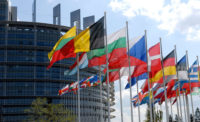They may have been on to something. The National Institute for Occupational Safety and Health (NIOSH) believes that having the right amount of knowledge helps protect workers from harmful levels of chemicals. For this reason, NIOSH recently released a report on occupational exposure banding to assess chemical hazards in the workplace.
U.S. workplaces use or produce a wide variety of chemicals, but many can harm workers who handle, transport, or come into contact with them. Of the more than 85,000 chemicals in commerce, only about 1,000 have been assigned occupational exposure limits (OELs) to help users know how to safely work with them.
Occupational exposure banding is a way to assess chemicals with no OELs. Banding assigns chemicals to bands based on potency and how the chemicals may harm health. Employers, workers, safety and health professionals, and others will use banding to improve workplace safety. Through the NIOSH occupational exposure banding process, users follow a detailed plan to assign a chemical to one of five bands. These range from A (least potent, highest exposure band indicated) to E (most potent, lowest exposure band indicated). The figure below shows the five bands.
Occupational exposure banding is a voluntary process to help guide risk management for chemicals that have no OEL. The bands give exposure ranges expected to protect worker health, and they can show potential health effects and organs that may be affected, as well as health risks that should be communicated. They may help users choose control interventions, make preparedness plans, and improve medical surveillance. The process also quickly gives critical information on chemical toxicity.
Banding uses easy-to-access hazard data on selected health effects so the user can choose exposure ranges or categories that are based on being exposed to the chemicals through breathing. Choosing a band for a chemical involves a three-tiered approach that considers how much good data are available, as well as on the user’s training and knowledge.
NIOSH has also launched the Occupational Exposure Banding e-Tool, an online tool that automates the occupational exposure banding process. The e-Tool serves as a supplementary application that provides users with an automated means to band chemical substances. Stakeholders and experts provided feedback to help NIOSH create the banding strategy and e-Tool as a way to use knowledge about toxicology and risk assessment to inform risk management decisions.
NIOSH hopes that the right amount of knowledge will have a big and positive impact. To learn more, please visit the NIOSH Occupational Exposure Banding webpage.
Source: NIOSH


